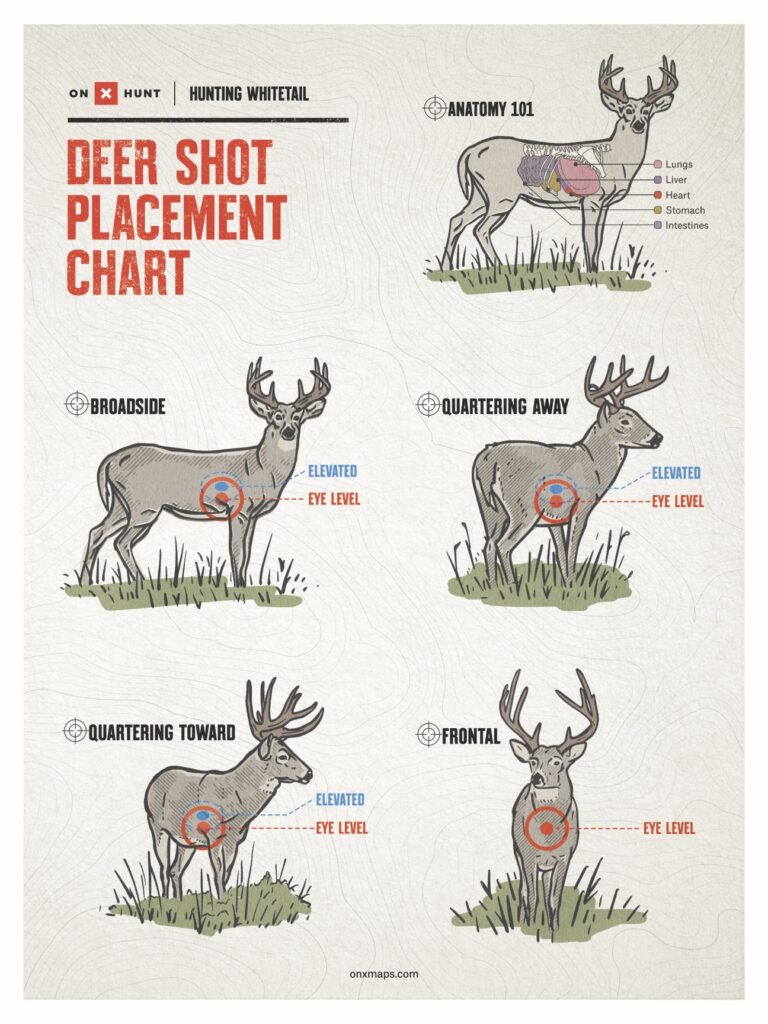A Hunter’s Dilemma: The Stakes of Time
As a seasoned hunter, I’ve experienced the heart-pounding thrill of a successful shot, swiftly dispatching my quarry. However, on a fateful day, a poorly placed gut shot led to a sobering lesson about the critical window for recovery. Understanding the intricacies of gut shot deer survival became paramount, initiating a meticulous investigation to unravel this complex phenomenon.

Image: www.onxmaps.com
Anatomy and Physiology: Understanding Gut Shot Survival
A gut shot inflicts injuries to the gastrointestinal tract and surrounding organs, causing damage that can vary in severity. The location of the wound, extent of organ damage, and immune system of the deer all play crucial roles in determining its fate.
In the immediate aftermath of a gut shot, bacteria from the intestines spill into the abdominal cavity, triggering a cascade of inflammatory and immune responses. Infection becomes a formidable adversary, as toxins released by the bacteria spread throughout the bloodstream. The severity of the infection depends on the extent of intestinal damage, with more substantial wounds increasing the likelihood of septic complications.
Time Is of the Essence: The Critical 24-72 Hours
The prognosis for a gut shot deer largely hinges on the time elapsed before recovery measures are initiated. In the initial 24-72 hours, the body attempts to fight off infection and neutralize toxins. During this precarious period, intervention becomes paramount to bolster the deer’s immune system and provide essential care.
Expert Advice for Augmenting Recovery
Should you encounter a gut shot deer, prompt action is imperative. Here are expert tips to optimize its chances of survival:
- Minimize stress: Keep the deer calm and reduce unnecessary handling to minimize the risk of further organ damage.
- Administer antibiotics: Broad-spectrum antibiotics, such as penicillin, help combat infection and prevent sepsis.
- Provide fluids: Intravenous fluids or subcutaneous injections of Ringer’s solution provide vital hydration and electrolyte replenishment.
- Keep the wound clean: Regularly clean the wound to minimize bacterial growth and promote healing.

Image: edition.cnn.com
Frequently Asked Questions
Q: What are the common signs of a gut shot deer?
A: Visible abdominal wounds, bloody or malodorous discharge from the wound site, abnormal posture (hunched back, arched neck), and labored breathing.
Q: How do I identify the severity of a gut shot?
A: Conduct a physical examination to assess the size and location of the wound, and check for signs of organ damage (e.g., coughing up blood, blood in urine).
Q: Is euthanasia ever necessary for a gut shot deer?
A: Yes, if the wound is extensive, the deer is suffering severe pain, or its chances of recovery are slim due to infection or organ damage.
How Long To Give A Gut Shot Deer
Conclusion
The aftermath of a gut shot deer presents a complex challenge for hunters. The critical 24-72 hour window following the injury dictates the deer’s survival prognosis. By understanding the anatomy and physiology of gut shots, implementing expert advice, and seeking veterinary assistance when necessary, hunters can maximize the chances of a successful recovery.
Are you interested in diving deeper into the intricacies of gut shot deer survival? Share your questions and experiences in the comments section below, and let’s embark on a collective journey of knowledge and understanding.